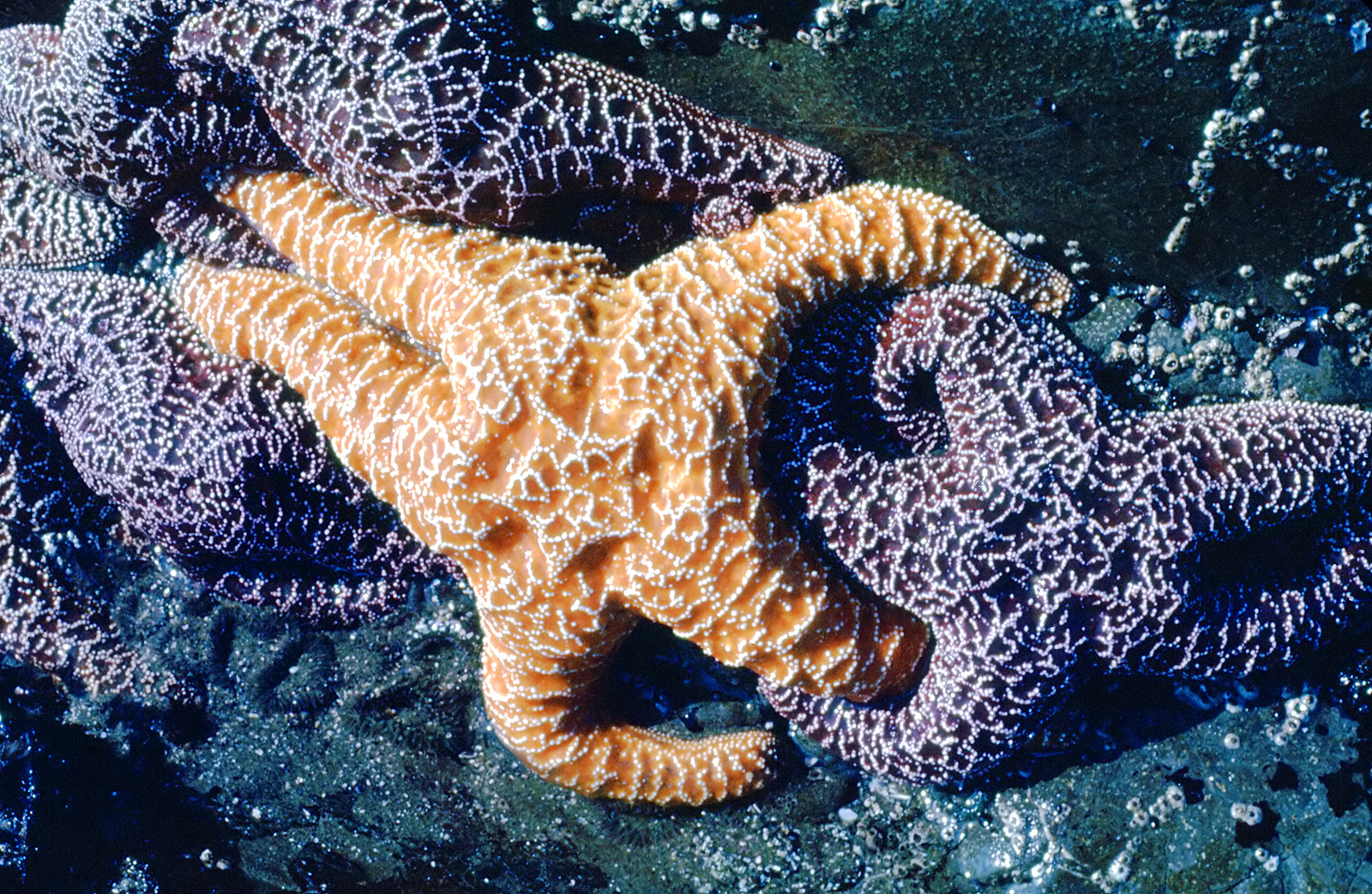A series of photos that probably was used as slide presentations to tourists in the park. Marked by Dudley.
Sea anemones are a group of water-dwelling, predatory animals of the order Actiniaria. They are named for the anemone, a terrestrial flower. A sea anemone is a polyp attached at the bottom to the surface beneath it by an adhesive foot, called a basal disc, with a column shaped body ending in an oral disc. Most are from 1.8 to 3 centimeters in diameter, but anemones as small as 4 millimeters or as large as nearly 2 meters are known. They can have anywhere from a few tens to a few hundred tentacles.
Starfish, or sea stars are echinoderms belonging to the class Asteroidea. The names “starfish” and “sea star” essentially refer to members of this class. About 1,500 living species of starfish occur on the seabed in all the world’s oceans, from the tropics to subzero polar waters. They are found from the intertidal zone down to abyssal depths, 6,000 m below the surface. Starfish are among the most familiar of marine invertebrates. They typically have a central disc and five arms, though some species have more than this. The aboral or upper surface may be smooth, granular or spiny, and is covered with overlapping plates. Many species are brightly colored in various shades of red or orange, while others are blue, grey or brown.
Vicia americana is a species of legume in the vetch genus known by the common names American vetch and purple vetch. It is a climbing perennial forb that grows from both taproot and rhizome. The leaves are each made up of oblong leaflets and have tendrils for climbing. It bears showy pea-like flowers in shades of lavender and fuchsia. American vetch is widespread across North America. It is a common understory plant in many types of forest and other habitats and it provides forage for wild and domesticated animals.


